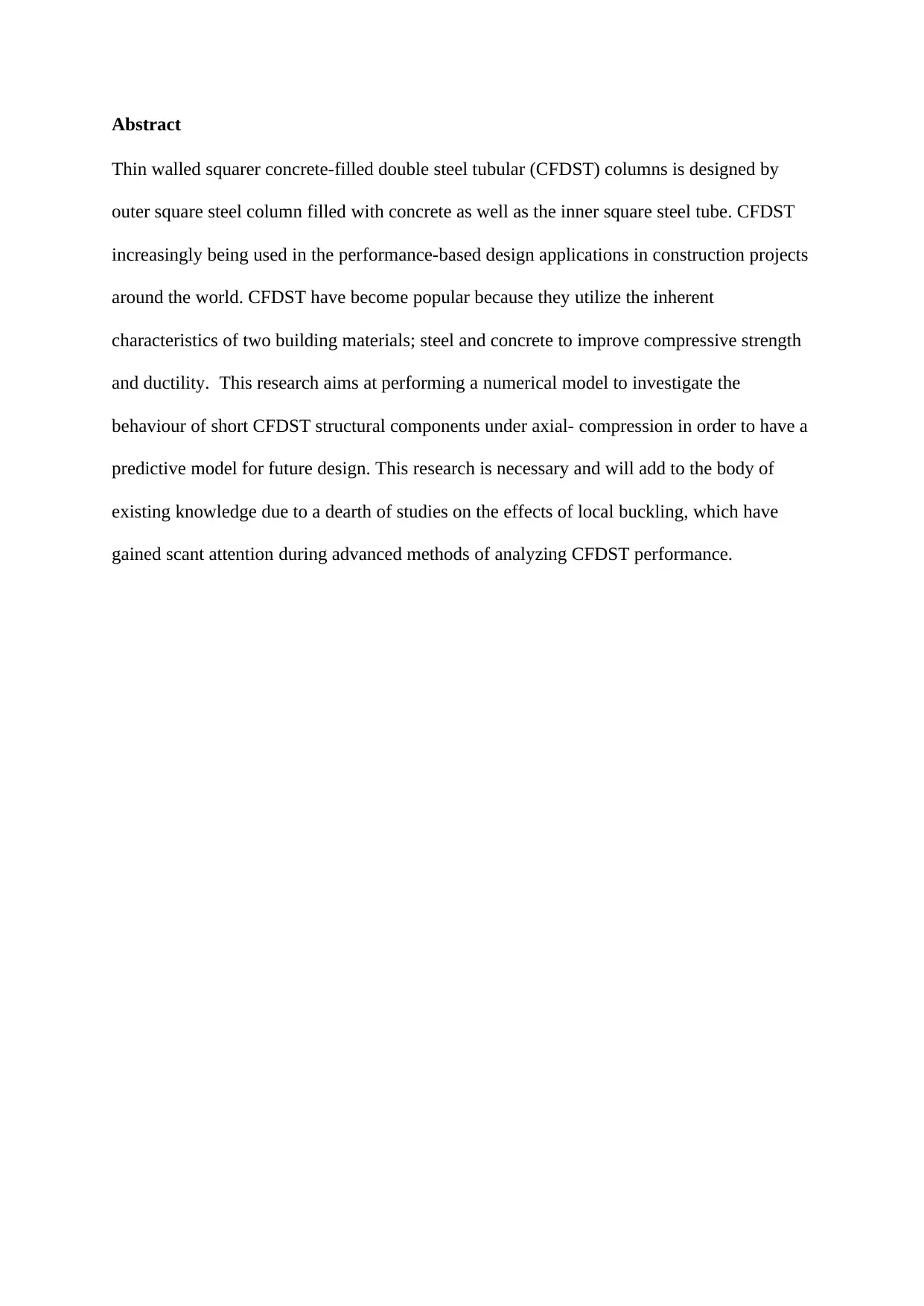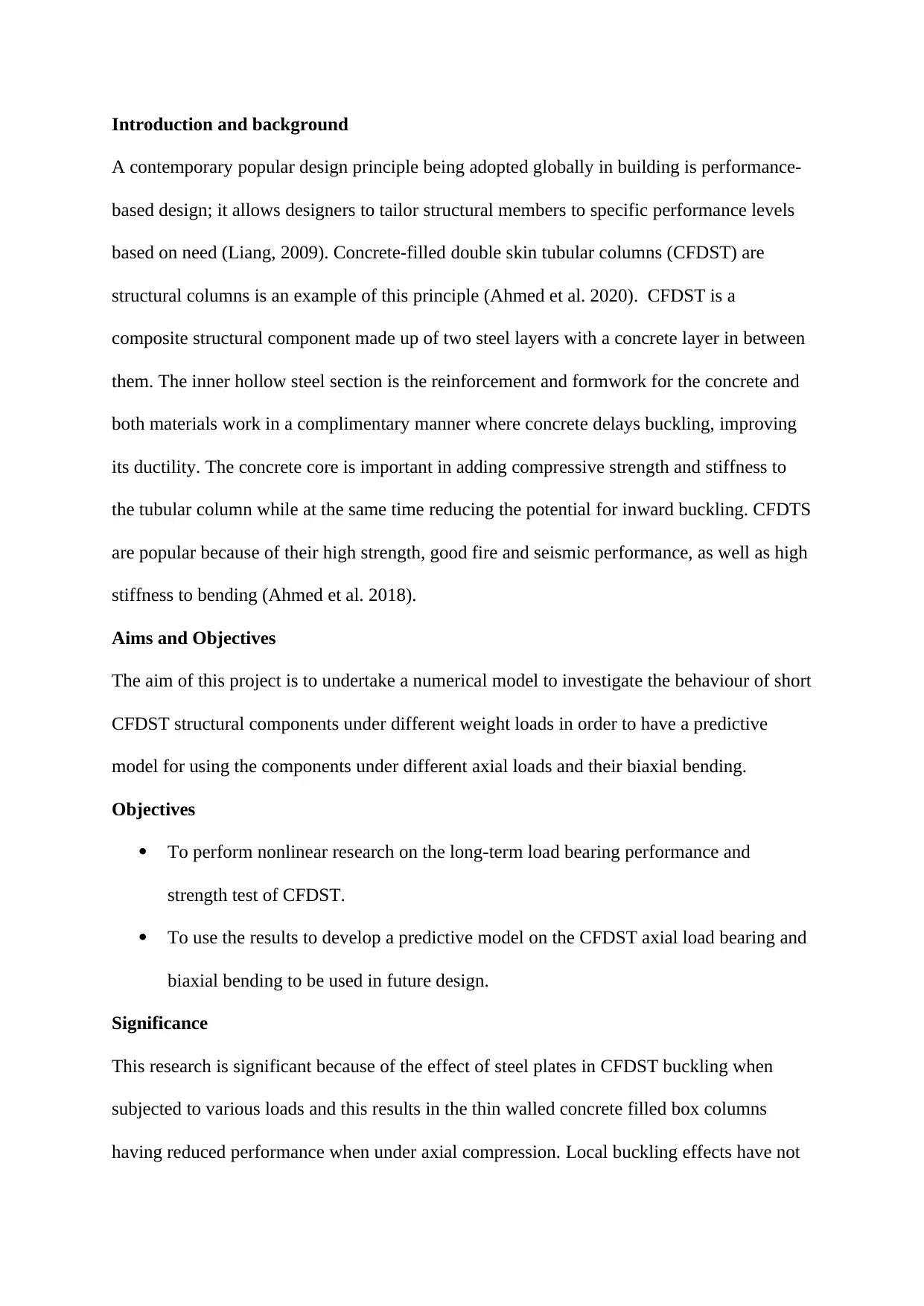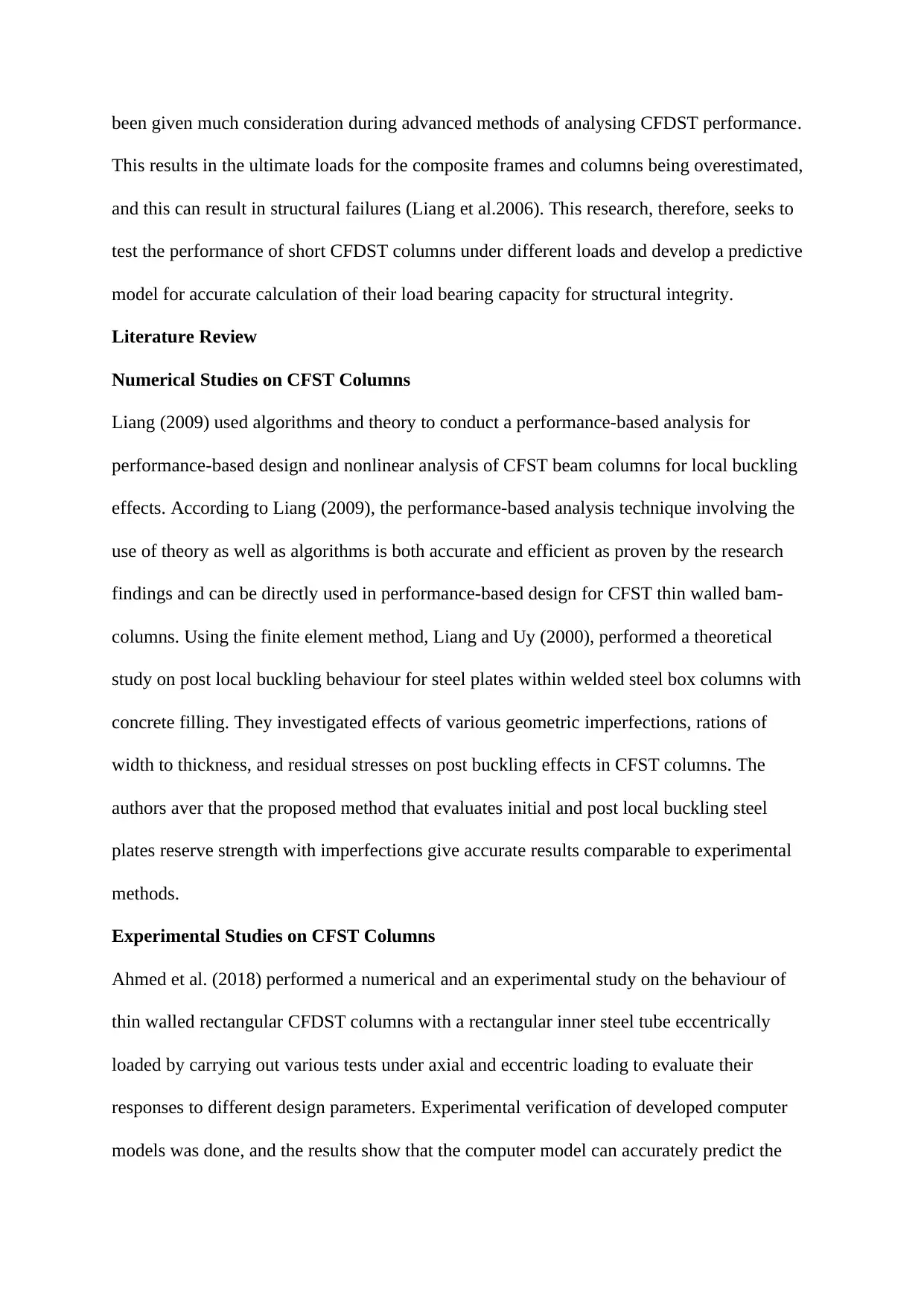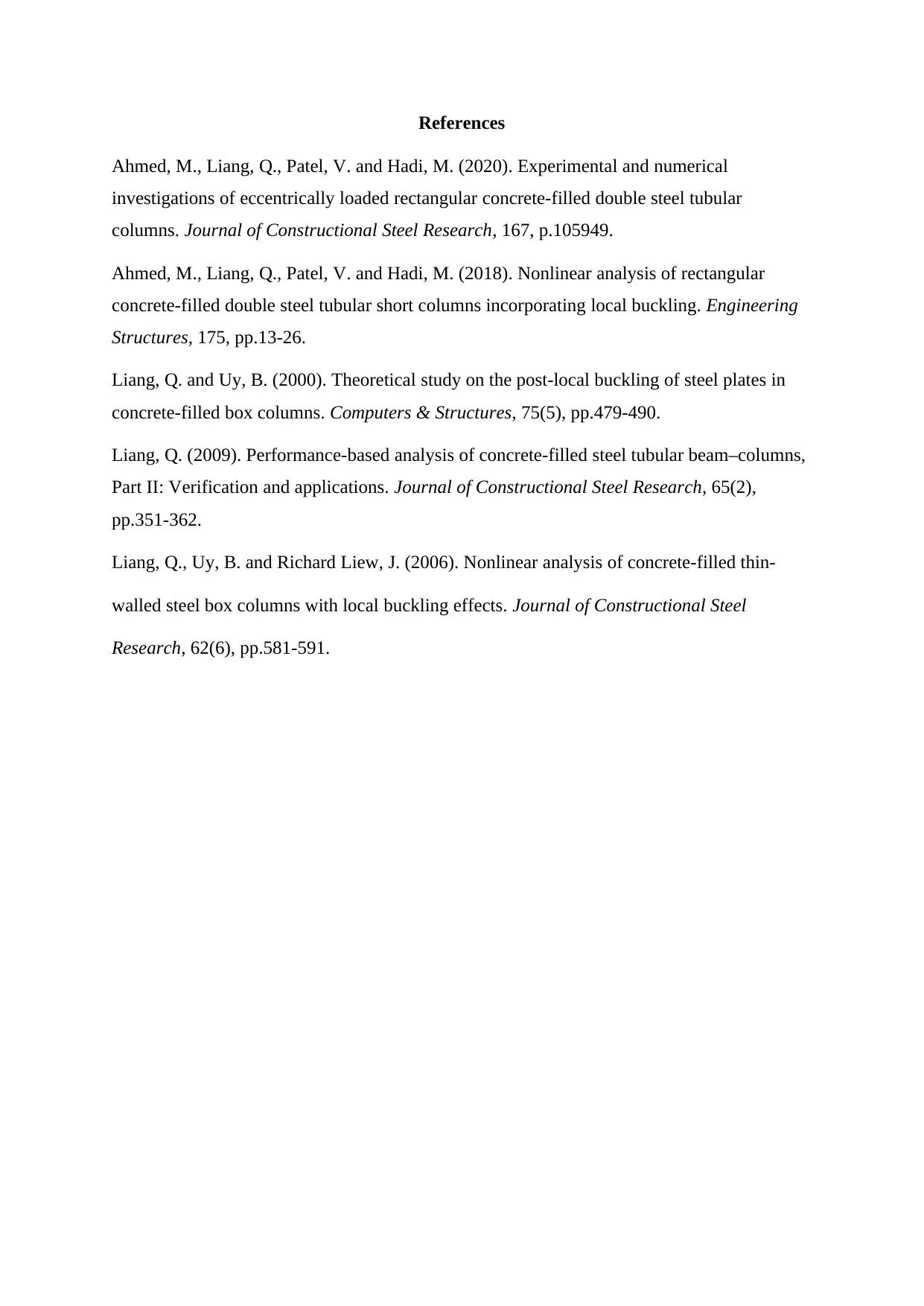Nonlinear Analysis of Double Square Steel Tubular Short CFDST Columns
VerifiedAdded on 2022/08/12
|6
|1042
|16
Report
AI Summary
This report presents a numerical model to investigate the behavior of short concrete-filled double skin tubular (CFDST) columns under axial compression. The research focuses on the performance of these structural components, which are increasingly used in construction due to their improved compressive strength and ductility derived from the combination of steel and concrete. The study aims to develop a predictive model for future design by analyzing the effects of different weight loads, local buckling, and biaxial bending. The report includes an introduction to CFDST columns, their significance, and a review of existing literature, including both numerical and experimental studies. It highlights the importance of considering local buckling effects to avoid overestimation of ultimate loads and potential structural failures. The methodology involves a nonlinear analysis to determine the load-bearing capacity of CFDST columns, with the goal of creating a model for accurate calculations in structural design. The literature review examines research by Liang (2009) and Liang & Uy (2000) on numerical analysis and Ahmed et al. (2018) on experimental analysis of CFDST columns. The report underscores the significance of this research in enhancing the understanding and design of CFDST columns in civil engineering.
1 out of 6











![[object Object]](/_next/static/media/star-bottom.7253800d.svg)